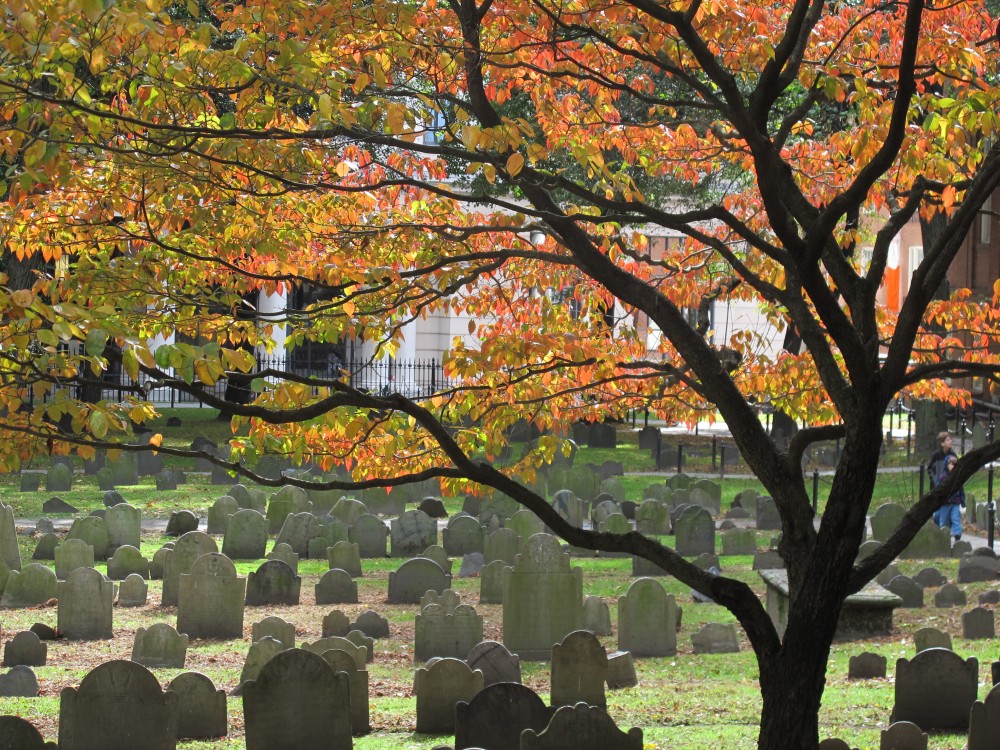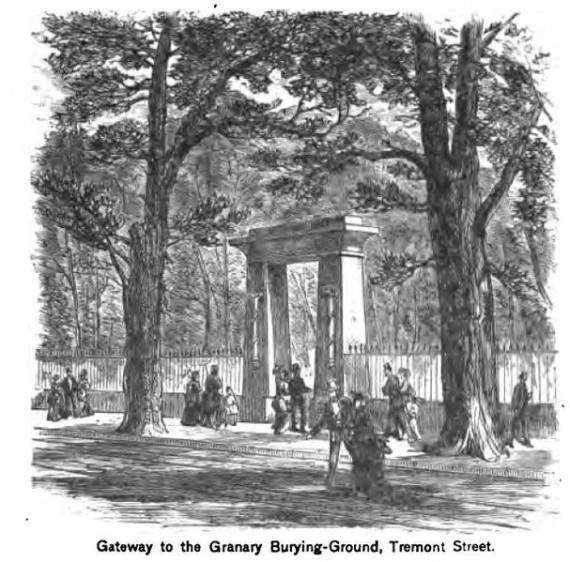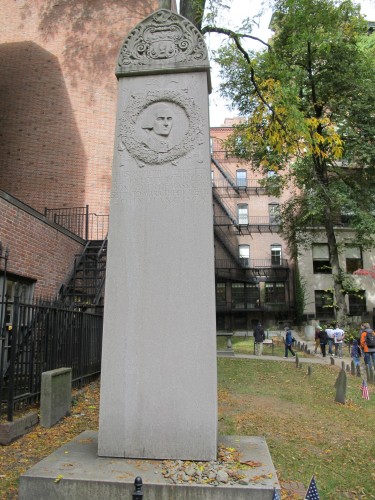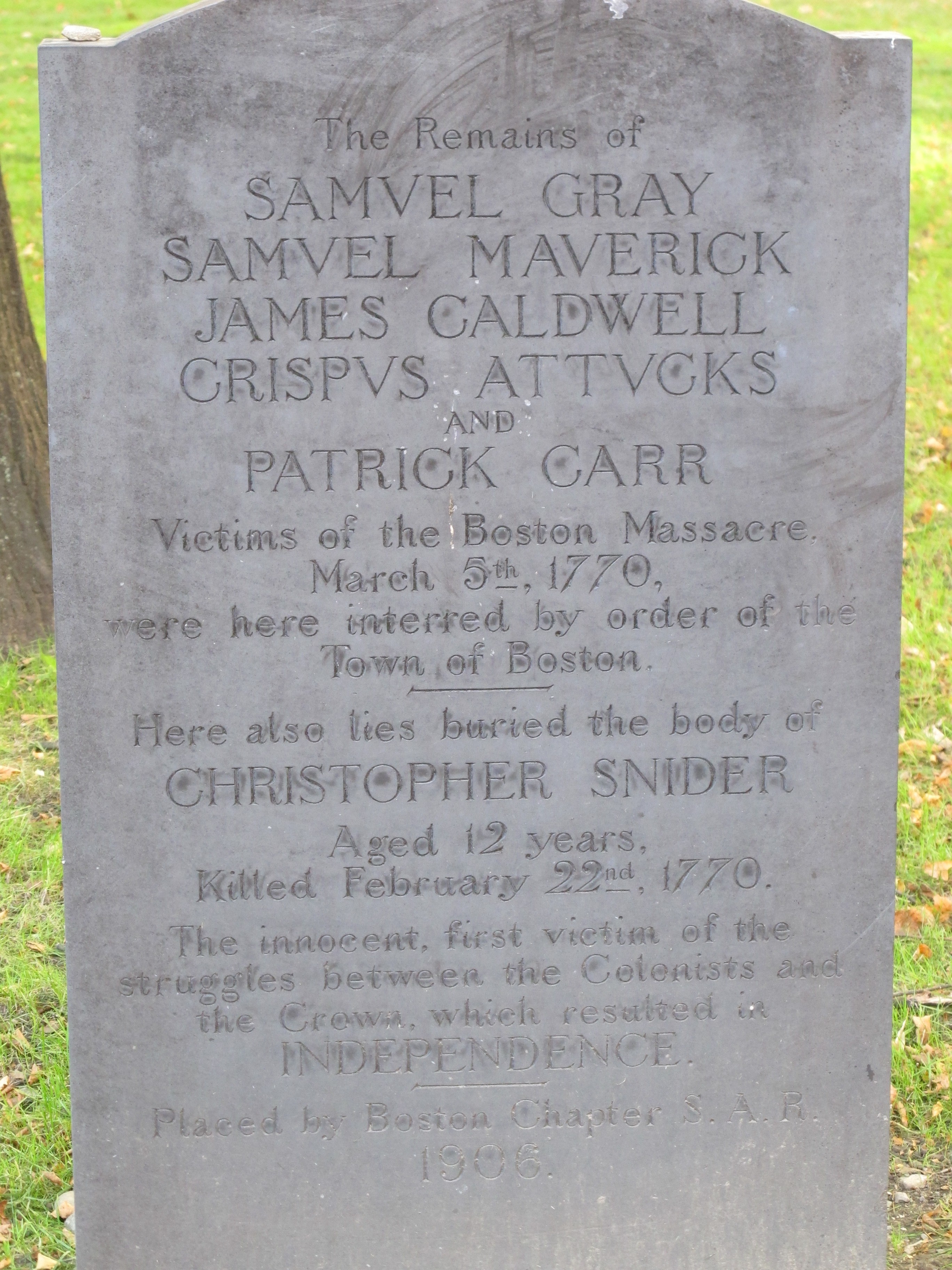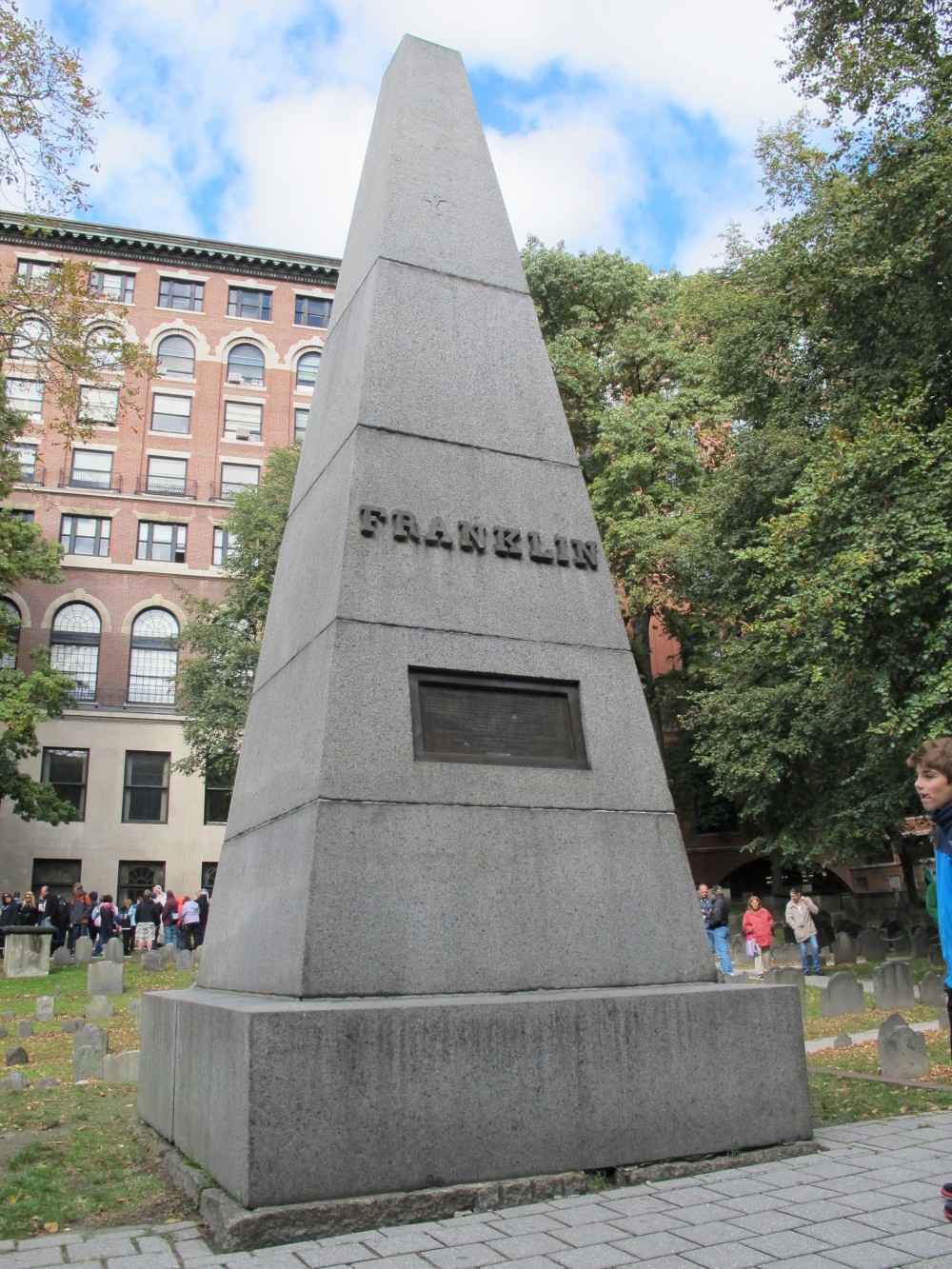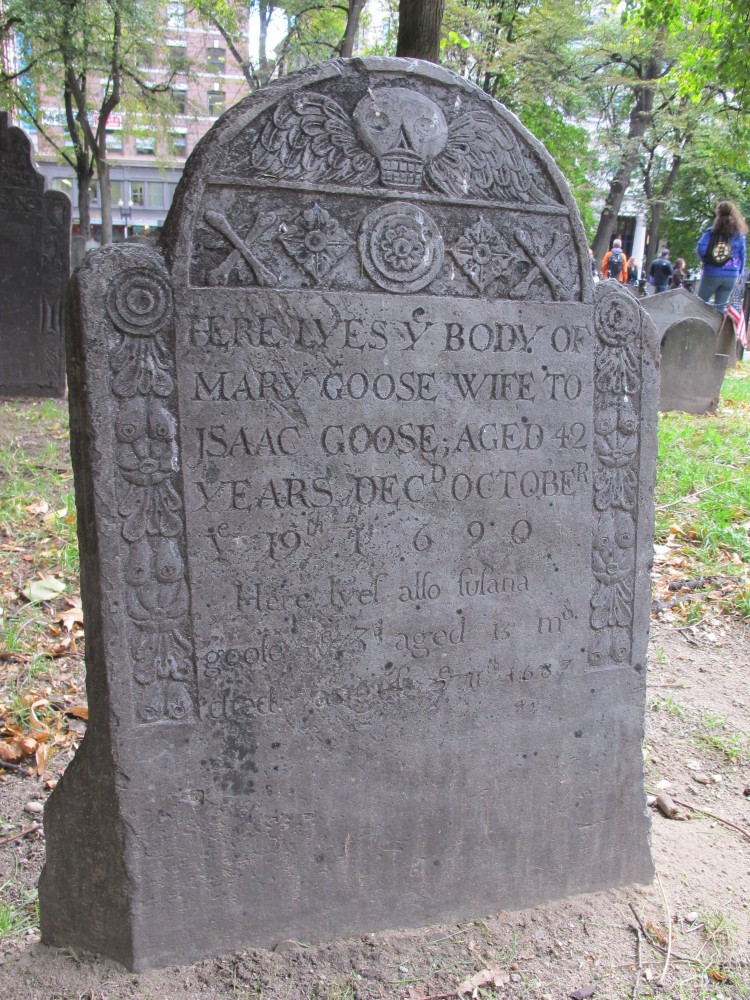Wikipedia outlines a bit of the history of the grounds:
The Burying Ground was the third cemetery established in the city of Boston and dates to the year 1660. The need for the site arose because the land set aside for the city's first cemetery, King's Chapel Burying Ground located a block east was insufficient to meet the city's growing population. Early in its existence the area was known as the South Burying Ground until 1737 at which point it took on the name of the granary building which formerly stood on the site of what is now the Park Street Church. In May 1830 trees were planted in the area and an attempt was made to change the name to “Franklin Cemetery” to honor the family of Benjamin Franklin, but the effort failed.
The Burying Ground in 1860 via The Boston Public Library
The Burying Ground was originally part of the Boston Common which then encompassed the entire block, but two years after the cemetery was established the southwest portion of the block was taken for public buildings, which included the Granary and a house of correction and the north portion of the block was used for housing.
Tombs were initially placed near the back of the property and on 15 May 1717 a vote was passed by the town to enlarge the Burying Ground by taking part of the highway on the eastern side, (now Tremont Street). The enlargement was carried out in 1720 when 15 tombs were created and assigned to a number of Boston families.
One of the most striking features of the Burying Ground was the row of eleven large European elms, (now gone) that fronted it on Tremont Street. The elms were planted in 1762 by Major Adino Paddock and John Ballard, and by 1856 reached ten feet in circumference. The walk under the elms was known as "Paddock's Mall." Ironically while the entrance was shaded by the large elms, the grounds itself were devoid of any trees at all until the first major improvement was undertaken in 1830 when a number of trees were planted around the grounds. The property was improved again in 1840 by the construction of an iron fence on Tremont Street designed by Boston architect Isaiah Rogers at a cost of $5,000, half paid by the city and half by public subscription.
The entrance to the burying ground in 1881 when the Elms were still there. From WikiCommons
The Final Resting Place of some Famous Bostonians
Paul Revere
The infamous rider and silversmith. Pennies are dropped off by his grave. The origin of the tradition is unknown.
John Hancock
A member of the Sons of Liberty and signer of the Declaration of Independence.
Sam Adams
A member of the Sons of Liberty and signer of the Declaration of Independence
Crispus Attucks and the Other Victims of the Boston Massacre
An African-American victim of the Boston Massacre, in a common grave with the other 4 victims
Ben Franklin's parents
Ben was born in Boston and his parents stayed in the city.
Mother Goose?
There is a Mother Goose head stone in the Burying Ground that many think is THE Mother Goose. Celebrate Boston sets us straight:
So Mary Goose, who has been incorrectly called the True Mother Goose or Boston's Mother Goose, was not even related to Elizabeth Goose, the mother-in-law that inspired Thomas Fleet to publish a book of children's nursery rhymes. The myth was apparently created to make her gravestone a tourist attraction, and was successful at achieving this goal in the 1950s through 1970s. Mary Goose had died in 1690, while the Mother Goose book did not get published until 1719.
Where is the Burying Ground?
Here's a map and a satellite view of the grounds. Its easy to get to and it is part of the Freedom Trail.
Aerial view of the Granary Buring Ground in Boston
Pictures of the Grounds
Here's some pictures from my visit there.
